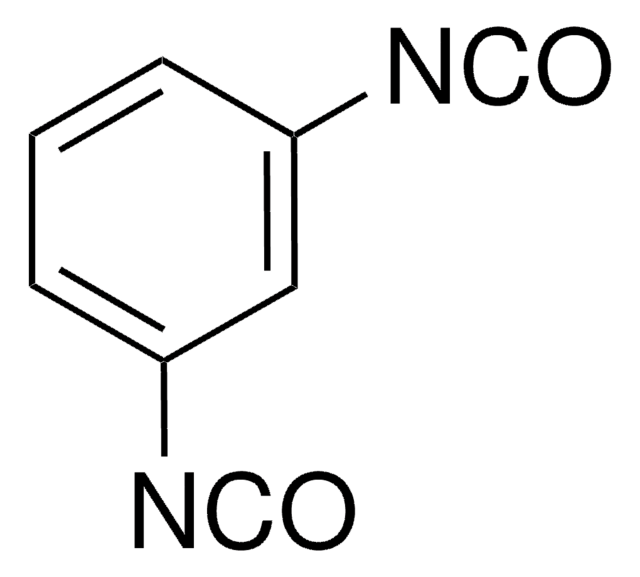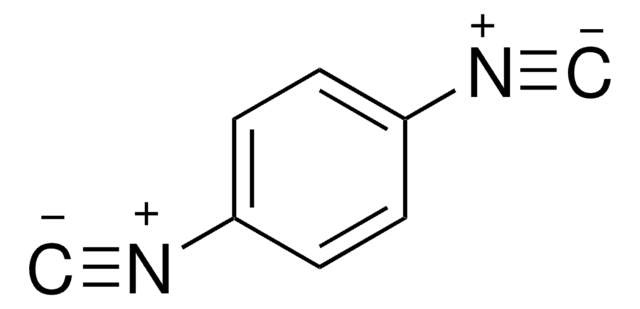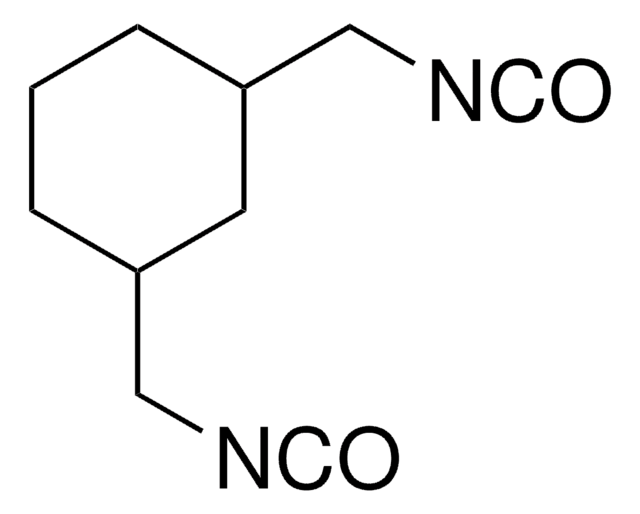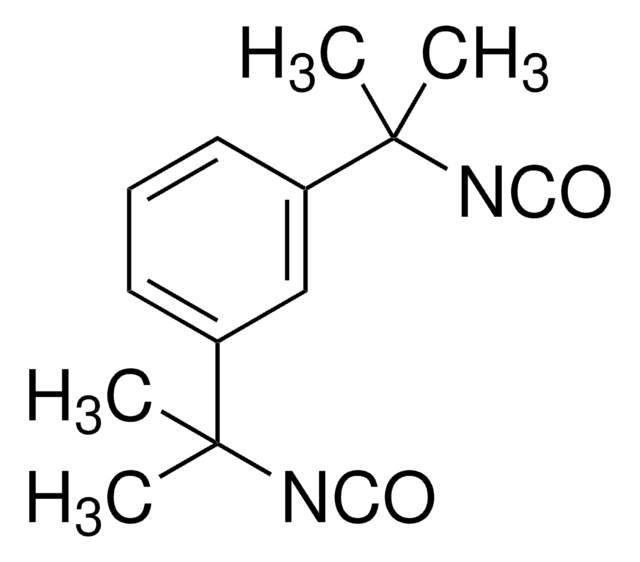262242
1,4-Phenylene diisocyanate
Synonym(s):
1,4-Diisocyanatobenzene, p-Phenylene diisocyanate
About This Item
Recommended Products
vapor pressure
<0.01 mmHg ( 20 °C)
Quality Level
form
solid
bp
260 °C (lit.)
mp
96-99 °C (lit.)
solubility
THF: soluble
acetone: soluble
ethyl acetate: soluble
toluene: soluble
functional group
isocyanate
SMILES string
O=C=Nc1ccc(cc1)N=C=O
InChI
1S/C8H4N2O2/c11-5-9-7-1-2-8(4-3-7)10-6-12/h1-4H
InChI key
ALQLPWJFHRMHIU-UHFFFAOYSA-N
Related Categories
Application
- A reactant to synthesize high yield polymers via criss-cross addition polymerization reaction with alkyl aldazines in pyridine.
- An organic building block to prepare adamantyl-containing diurea and thiourea derivatives applicable as potent mammalian and human soluble epoxide hydrolase inhibitors.
- A coupling agent to synthesize polyethylene glycol (PEG)/silica composite material using dibutyltin dilaurate (DBTDL) as a catalyst.
It can also be used:
- As a cross-linking reagent to investigate the mechanism of enzyme immobilization on silanized surfaces.
- In the synthesis of the dipodal bis-urea receptor, a selective receptor for hydrogen sulfate.
- In the deposition of polyurea resists films via molecular layer deposition.
Signal Word
Danger
Hazard Statements
Precautionary Statements
Hazard Classifications
Acute Tox. 2 Inhalation - Aquatic Chronic 2 - Eye Irrit. 2 - Resp. Sens. 1 - Skin Irrit. 2 - Skin Sens. 1
Storage Class Code
6.1A - Combustible acute toxic Cat. 1 and 2 / very toxic hazardous materials
WGK
WGK 3
Flash Point(F)
>235.4 °F - closed cup
Flash Point(C)
> 113 °C - closed cup
Personal Protective Equipment
Choose from one of the most recent versions:
Already Own This Product?
Find documentation for the products that you have recently purchased in the Document Library.
Customers Also Viewed
Our team of scientists has experience in all areas of research including Life Science, Material Science, Chemical Synthesis, Chromatography, Analytical and many others.
Contact Technical Service















